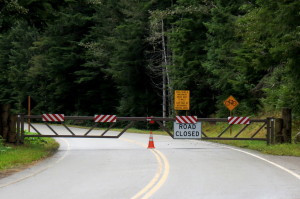Big solar has been put on ice in eastern Alameda County over worries about how row-upon- row of solar panels would impact wildlife and farming.
After Pegasus Energy Partners submitted an application in April to cover 2,000 acres of prime farmland with a solar operation, a debate has raged over whether solar should be treated as any other kind of development with the potential to scar the landscape.
The Pegasus project would be larger than the Mojave Desert photovoltaic farm, generating 400 megawatts, enough to power 250,000 homes, on open land to the north of Interstate 580 and west of the Mountain House community in Alameda County.
Alameda planning officials are now preparing a comprehensive solar policy for the rural, eastern side of the county that would define where and under what circumstances solar projects would be allowed. That’s a far greater level of review than an earlier directive by the county board of supervisors that put a September deadline on a plan to pave the way forward for solar.
Bruce Jensen, a senior planner for the county, said the process of coming up with a solar policy could take a year or longer and would require an environmental review and an amendment to the county’s general plan. The new policy would also be checked for compliance with Measure D, a voter-approved urban growth boundary around Dublin, Pleasanton, and Livermore.
During that time, Pegasus or any other solar operator, should not expect to see their applications move forward, Jensen said, although there will be no impediment to urban or rooftop solar projects elsewhere in Alameda County.
“If you want to cover the rooftop of a factory, an office building or a shopping mall, we’d probably say, ‘No sweat, do it,’” Jensen said.
Wildlife advocates are pleased with the slowdown on solar.
“Pegasus won’t just get re-zoning,” said Rich Cimino, the conservation chairman of the Ohlone Audubon Society. “They have to jump through a lot of hoops and the conservation community will be there.”
Cimino said the Pegasus project would cover irrigated alfalfa fields, which are foraging habitat for raptors. The timing of irrigation happens to coincide with the arrival of migrating birds, which find an abundance of rodents flooded out of their burrows, he said. Solar would change that.
“If you’re an eagle flying over and you used to see prime irrigated farm area, you now see reflective panels,” Cimino said. “There’s no place to land, no place to hunt, and no place to take off. It becomes an industrial zone.”
Cimino worries that without the fields, raptors would head up the slopes around Altamont Pass to hunt and fly into the wind turbines that dot the hillsides. Those wind turbines have been a topic of even longer standing contention with wildlife advocates over bird deaths.
Jensen said it’s ambiguous what would happen with the raptors, but locating solar next to wind would be unusual.
“I don’t believe there’s anywhere in the world where you have solar panels next to wind turbines, so we may be going completely blind on this,” he said.
The East Bay chapter of the California Native Plant Society (CNPS) also objected to the Pegasus project for treading too close to rare atriplex species of salt-tolerant plants that inhabit patches of sensitive alkaline habitat in the area. Heath Bartosh of CNPS said razing the ground to install solar panels would also create opportunities for non-native plant species.
“Earth moving introduces new weeds and weed populations that haven’t been in the area before or had a stronghold,” said Heath Bartosh of CNPS.
Bartosh and other opponents of the Pegasus plan said Alameda County should direct solar companies to rooftops in urban areas rather than greenfields.
The Pegasus project has drawn the most attention, but the area has already been cited for a 140-acre photovoltaic farm called CoolEarth. Shawn Wilson, a spokesman for Alameda County Supervisor Scott Haggerty, said size matters in rural areas.
“It’s short-sighted to say, ‘Why don’t we stay on the rooftop,” Wilson said. “But Pegasus is large-scale. I don’t think the community or supervisor could support that.”
Pegasus is undeterred by the roadblocks. Pegasus CEO Mike Clevenger said the company still plans to go forward with its application.
“At the end of the day, I believe their timing on the [solar] amendment will probably work out with our timing,” he said.
As for wildlife concerns, Clevenger said Pegasus is conducting environmental studies of the area and has plans to preserve Mountain House Creek that is home to threatened species like the red-legged frog. Any vernal pools, where the atriplex plants take root, will also be maintained, he said.
“You’re not going to find here on this site a development that’s going to run in and bulldoze everything down,” Clevenger said. “We’re going to work with the county and various stakeholders to come up with and resolve whatever the problems and issues are.”
The sun has not yet set on the battle over solar in Alameda County.

.jpg)



